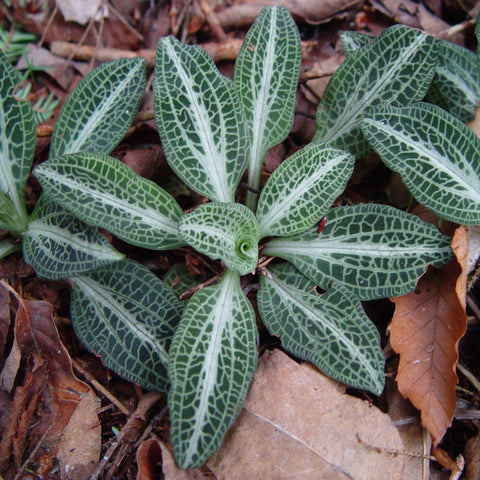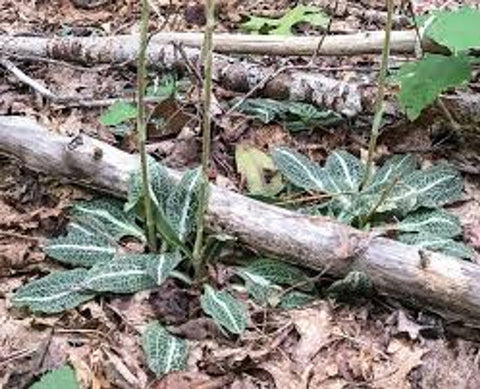

Goodyera Pubescens - Downy rattlesnake plantain
The Goodyera Pubescens plant is a herbaceous perennial evergreen plant. It belongs to the orchid family and is found in mesic woodland, dry wooded slopes, wooded ravines, and bluffs. The white markings on the leaf resemble the skin of a rattlesnake. The flower stalks became covered with down, giving it the common name Downy rattlesnake plantain.
It was given the name wildflower in 2016. It has roots that have a mycorrhizal relationship with fungi that help the plant acquire nutrients and moisture. When fungus feeds on plant products from photosynthesis, this occurs. It spreads by rhizomatous offsets. This plant overgrows in a woodland garden setting.
It necessitates acidic soil, dappled sunlight, mulch layer, organic matter soil, and soil moisture consistency. The leaves are crowded together, alternate, and only elevated on a round level above. Pubescens is another name for rattlesnake plantain, a common orchid in Eastern North America.
Places of growth
The plant grows well in a woodland garden setting. It requires acidic soil with organic matter and a mulch layer to ensure consistent soil moisture.
Suppose you live near the coast; plant rattlesnake plantain in a location that receives full sun. If you live inland, you should plant in areas that receive afternoon shade. The ideal location is an evergreen beneath where they can receive dappled sunlight. It should be grown in the best, well-drained soils.
You should mix equal parts leaf mold, peat moss, and sand and add a three-inch thick soil material to the planting area. Before planting, you should use a gardening fork to mix the top six inches of the soil of Rattlesnake plantain. The orchids should be watered during summer and spring to moisten the soil.
Allow the top two inches of soil to dry out before watering in the winter and autumn. To plant rattlesnake plantains, a large pot is optional. This is because the production's root system will need to be more active to take up a lot of room. The soil retains more water in a large pot, which leads to root rot.
Goodyera Pubescens roots can be covered with sphagnum moss while growing in a warm, humid environment and are strung up from a tree.
Reasons for buying Goodyera Pubescensplant
Goodyera Pubescens in a pot is well-grown for indoor decorations.
- It is advised to grow outside in the tropics.
- It has flowers with vibrant colors and long blooming seasons that add elegance and beauty to the home.
- The orchid flowers are graceful and have a pleasant scent.
- The plantain blooms along a thin flower stem that can be used to cut flowers for decorative vase arrangements.
- Its surroundings demand that you meet strict water, temperature, and sun exposure requirements.
Benefits of growing Goodyera Pubescens
- Even at night, the plant filters the indoor air. This plant's ability to produce oxygen from carbon dioxide sets it apart from other plants.
- They are removing dangerous pollutants. The plant can absorb carcinogens like toluene, benzene, CO2, and xylene.
- Supports improving mental health. Due to its therapeutic effects, horticultural therapy is used for this treatment.
- It is simpler to maintain and requires less care. They can withstand dry air, underwatering, and direct and indirect sunlight.
- Claims to be effective. They release moisture and oxygen to reduce airborne impacts like dander and dust.
- Physical components of minor relevance. They usually help reduce inflammation and heal skin wounds like burns.
One Year Guarantee on all Perennials & Ferns. See Healthy Plant Guarantee for more details.
Color:
Green, White
Ships As:
Bare Root Plant
Season:
All Year
Zone:
4-10
Exposure:
Sun & Shade
Deer Resistant:
No
Native:
Yes




